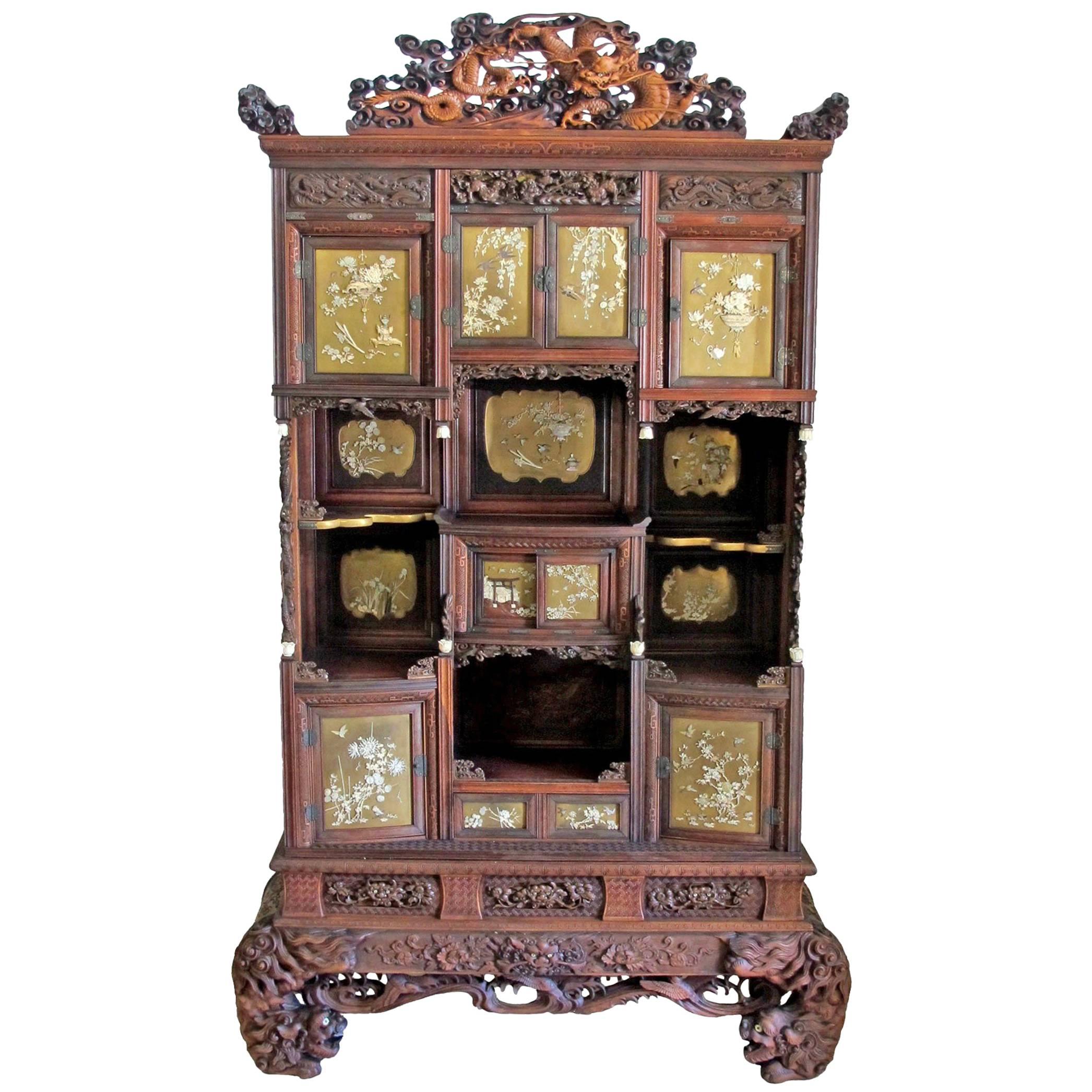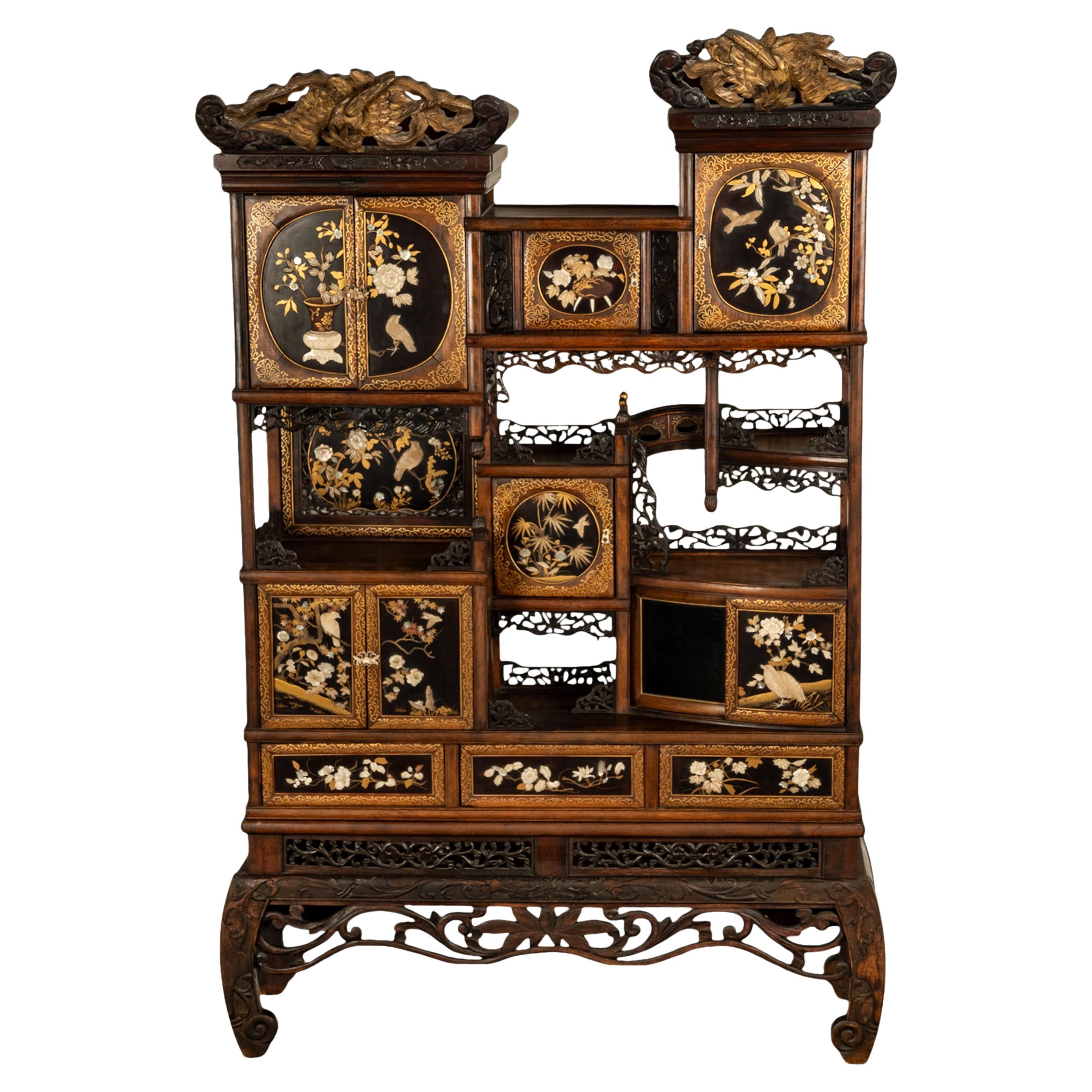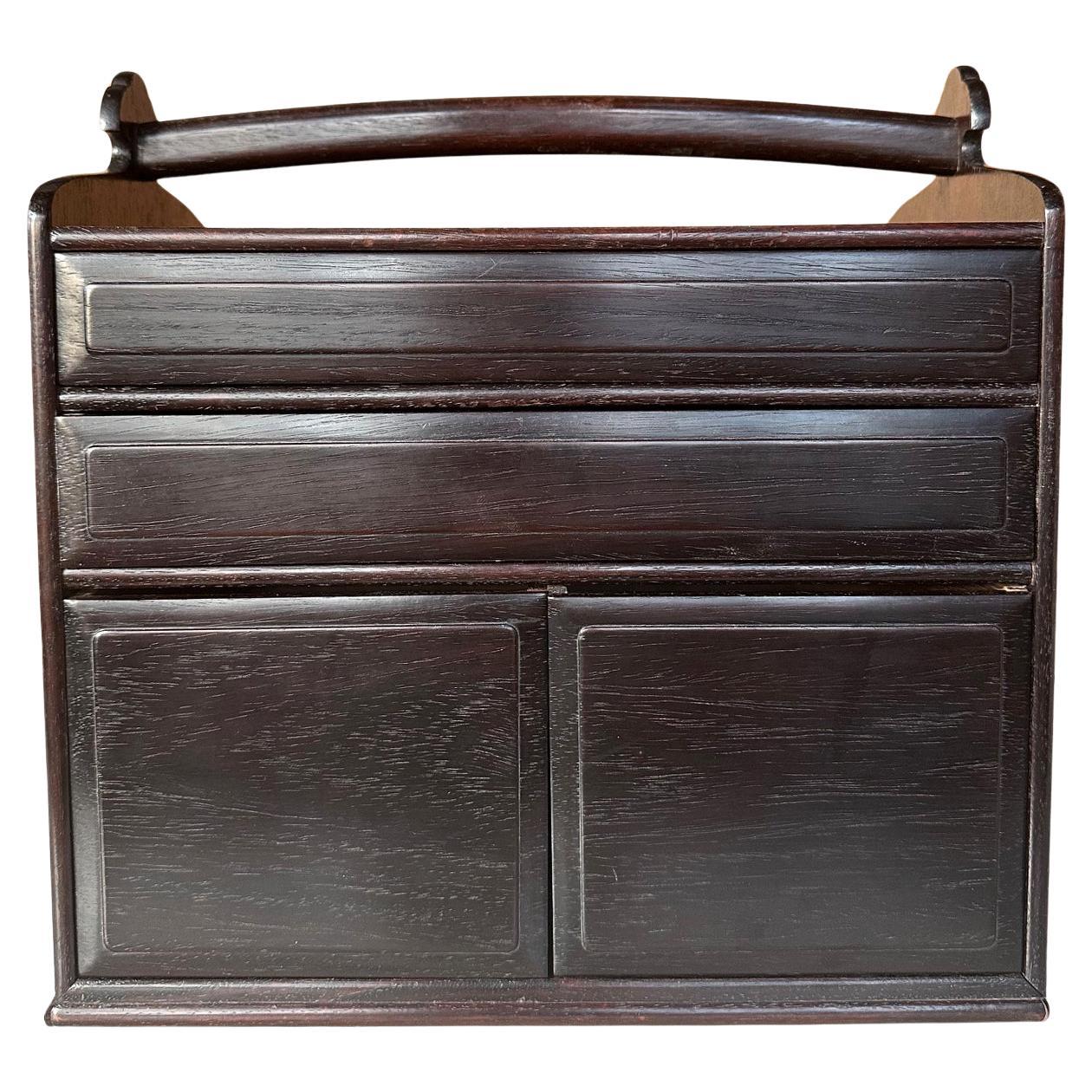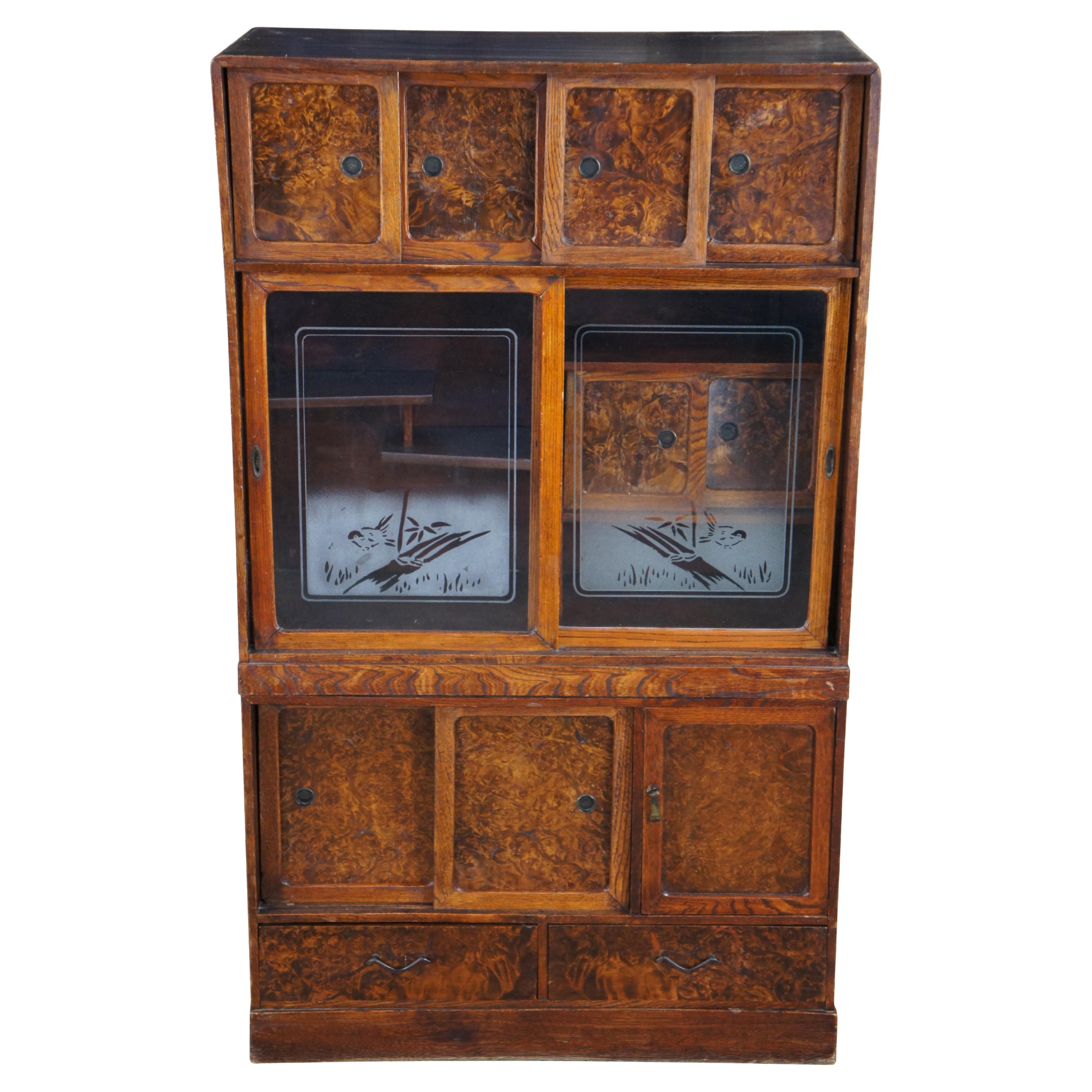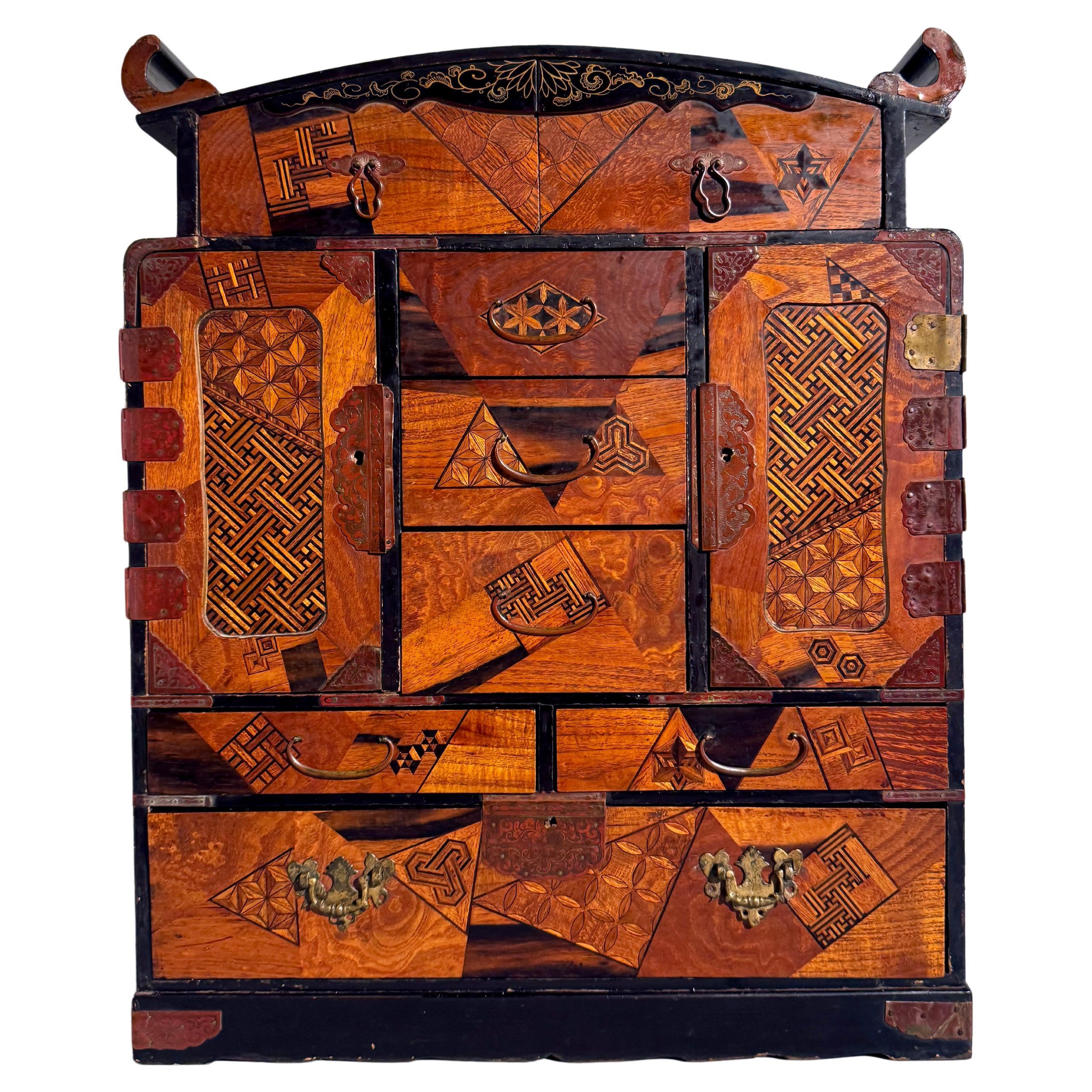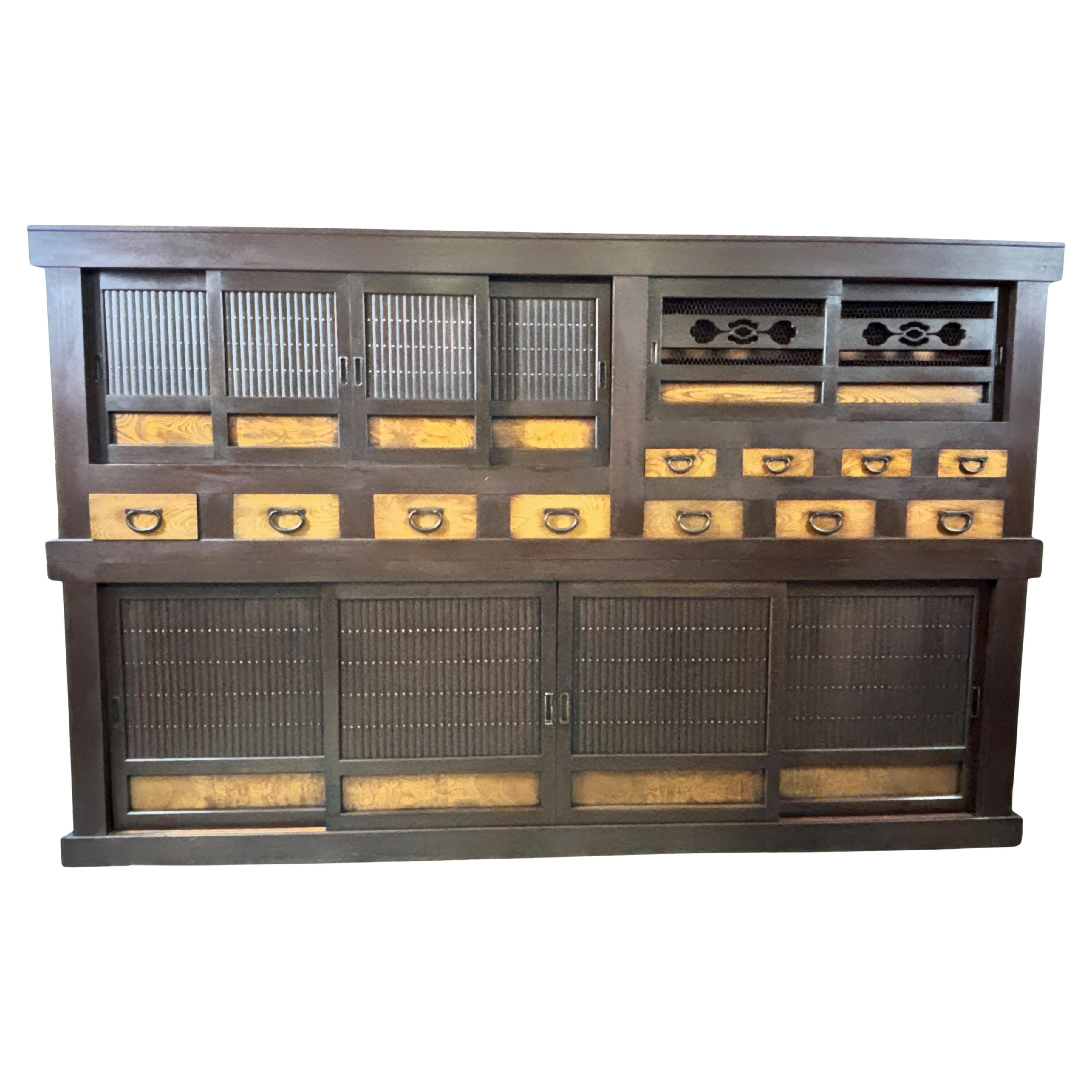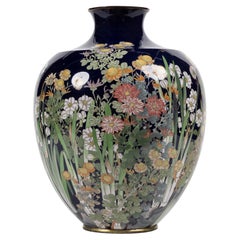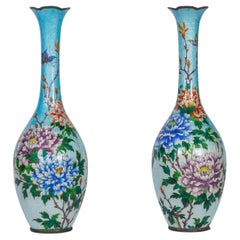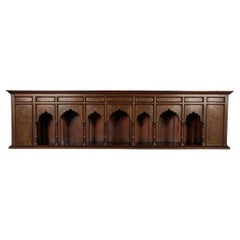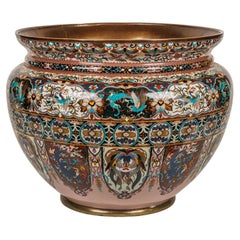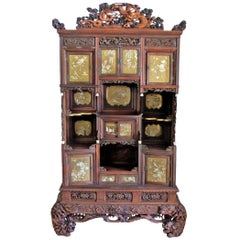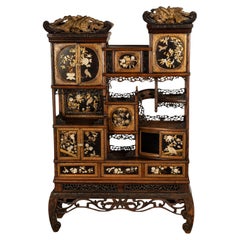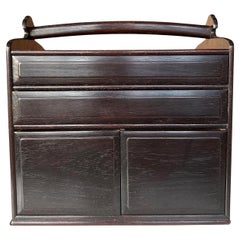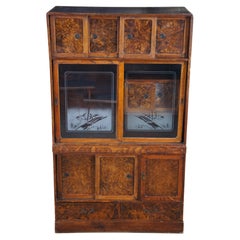Items Similar to An Imperial Japanese Meiji Shibayama Tea Cabinet by The Tokugawa Samurai Clan
Video Loading
Want more images or videos?
Request additional images or videos from the seller
1 of 21
An Imperial Japanese Meiji Shibayama Tea Cabinet by The Tokugawa Samurai Clan
About the Item
An Imperial Japanese Meiji Shibayama Tea Ceremony Cabinet by The Tokugawa Samurai Clan.
This extraordinary Meiji-period shibayama cabinet, attributed to the Tokugawa samurai clan, stands as a masterful example of Japanese craftsmanship and cultural symbolism. Crafted with impeccable detail, the cabinet combines traditional Japanese aesthetics with intricate symbolism, drawing from the rich cultural and historical heritage of Japan. The base of the cabinet features two dragons locked in a dramatic duel, symbolizing power and balance. Each door panel showcases unique scenes of birds soaring over cherry blossoms and serene Japanese garden landscapes. Fans adorned with depictions of dragons and garden motifs further enhance the cabinet’s decorative appeal. At the pinnacle of this work is the Tokugawa Mon (family crest), accompanied by a phoenix, a revered symbol in Japanese art and mythology.
The cabinet contains multiple compartments, each door meticulously decorated with floral garden scenes. The center panel is a striking feature, adorned with intricately carved cinnabar and lacquer inlay. Additionally, the cabinet includes a bridge with foo dogs stationed at each end, symbolizing protection and prosperity. Each compartment door is further enhanced with a phoenix bird, meticulously carved into the wood, reinforcing the themes of renewal and power.
The Tokugawa Clan: Legacy and Influence
The Tokugawa clan rose to prominence during the early 17th century under Tokugawa Ieyasu, the founder of the Tokugawa shogunate, which ruled Japan from 1603 to 1868. The clan’s governance ushered in an era of peace and cultural flourishing known as the Edo period. Their legacy is deeply intertwined with Japan’s political stability and artistic development. The shogunate encouraged artisans, fostering the creation of exceptional works in ceramics, lacquerware, and metalwork. This cabinet exemplifies the Tokugawa’s dedication to artistic excellence and their enduring influence on Japanese art.
A story often associated with the Tokugawa clan illustrates their wisdom and strategic prowess. During the pivotal Battle of Sekigahara in 1600, Ieyasu’s patience and tactical acumen led to a decisive victory, unifying Japan under his leadership. This victory was not only a political milestone but also set the stage for the clan’s cultural patronage, influencing works like this shibayama cabinet centuries later.
The Symbolism of Dragons in Japanese Art and Culture:
Dragons are a recurring motif in Japanese art, embodying power, wisdom, and protection. Unlike their Western counterparts, Japanese dragons are often associated with water and are seen as benevolent guardians of natural forces. The two dragons depicted on the cabinet’s base are engaged in a dynamic duel, symbolizing balance and the interplay of opposing forces—a theme deeply rooted in Japanese philosophy and Shinto beliefs.
In Japanese culture, dragons are also tied to the emperor and the divine. They represent a bridge between heaven and earth, reflecting a harmony that mirrors the Tokugawa’s rule—a balance between order and cultural growth. The depiction of dragons on this cabinet not only showcases their importance but also aligns with the Tokugawa’s identity as protectors of Japan’s heritage.
The Cabinet’s Doors: Scenes of Nature and Symbolism
The doors of the cabinet are adorned with exquisite inlaid shibayama work, featuring birds in flight over blooming cherry blossoms and tranquil Japanese garden scenes. These motifs celebrate Japan’s natural beauty and the transient nature of life, a concept known as *mono no aware*. Cherry blossoms, a central symbol in Japanese art, represent both the fleeting beauty of existence and renewal. Birds, often depicted in flight, symbolize freedom and the soul’s transcendence.
The gardens illustrated on the cabinet reflect a meditative quality, inviting viewers to contemplate nature’s harmony. Such landscapes were significant during the Meiji period, as Japan sought to balance its traditional identity with rapid modernization. These motifs underscore the Tokugawa’s role in preserving Japan’s cultural essence amidst change.
Fans as Decorative Elements:
Fans are a recurring decorative element on this cabinet, showcasing scenes of dragons and Japanese gardens. In Japanese culture, fans are both practical objects and symbolic artifacts. They are often associated with social status, rituals, and seasonal celebrations. The inclusion of fans on this cabinet emphasizes elegance and serves as a canvas for intricate artistry. The depictions of dragons and gardens on the fans reiterate the cabinet’s themes of balance, beauty, and cultural heritage.
The Tokugawa Mon and Phoenix: Significance in Japanese Art
At the cabinet’s apex lies the Tokugawa Mon, featuring the clan’s iconic triple hollyhock crest alongside a phoenix. The Mon, a symbol of the Tokugawa’s authority and legacy, reinforces the cabinet’s provenance. The addition of the phoenix elevates the cabinet’s symbolism, as the phoenix is a revered creature in Japanese mythology, representing immortality, renewal, and harmony.
In Japanese art, the phoenix is often depicted alongside motifs of imperial significance. Its presence here may allude to the Tokugawa’s divine right to rule and their enduring influence. Combined with the Mon, the phoenix creates a powerful emblem of legacy, resilience, and cultural preservation.
This Meiji-period shibayama cabinet is a testament to the Tokugawa clan’s enduring impact on Japanese art and culture. Through its intricate craftsmanship and rich symbolism—from the dueling dragons and serene natural landscapes to the Tokugawa Mon and phoenix—the cabinet encapsulates a harmonious blend of power, tradition, and artistic innovation. It stands as a remarkable artifact, preserving the essence of a transformative era in Japan’s history.
84" high x 56" wide x 20" deep
Very good condition, normal wear consistent with age and use. Some fading to lacquer on some panels, otherwise excellent condition- A true museum piece.
*Please note the Cloisonne enamels are not included with the cabinet.
- Dimensions:Height: 84 in (213.36 cm)Width: 56 in (142.24 cm)Depth: 20 in (50.8 cm)
- Style:Meiji (Of the Period)
- Materials and Techniques:
- Place of Origin:
- Period:
- Date of Manufacture:19th Century
- Condition:Wear consistent with age and use.
- Seller Location:New York, NY
- Reference Number:1stDibs: LU1798243159532
About the Seller
5.0
Vetted Professional Seller
Every seller passes strict standards for authenticity and reliability
Established in 1980
1stDibs seller since 2016
63 sales on 1stDibs
Typical response time: 5 hours
- ShippingRetrieving quote...Shipping from: New York, NY
- Return Policy
Authenticity Guarantee
In the unlikely event there’s an issue with an item’s authenticity, contact us within 1 year for a full refund. DetailsMoney-Back Guarantee
If your item is not as described, is damaged in transit, or does not arrive, contact us within 7 days for a full refund. Details24-Hour Cancellation
You have a 24-hour grace period in which to reconsider your purchase, with no questions asked.Vetted Professional Sellers
Our world-class sellers must adhere to strict standards for service and quality, maintaining the integrity of our listings.Price-Match Guarantee
If you find that a seller listed the same item for a lower price elsewhere, we’ll match it.Trusted Global Delivery
Our best-in-class carrier network provides specialized shipping options worldwide, including custom delivery.More From This Seller
View AllAn Exquisite Quality Meiji Period Japanese Cloisonne Enamel Bud Vase
Located in New York, NY
Presenting a truly remarkable piece, this large exquisite quality cobalt ground Meiji Period Japanese cloisonne Enamel Bud Vase. This magnificent artwork embodies the timeless beauty...
Category
Antique 19th Century Japanese Meiji Vases
Materials
Enamel
An Exquisite and Large Pair of Meiji Japanese Ginbari Cloisonne Enamel Vases
Located in New York, NY
An Exquisite and Large Pair of Meiji Japanese Ginbari Cloisonné Enamel Vases with Peonies and Butterflies
This stunning pair of vases, crafted during the Meiji period (1868-1912), s...
Category
Antique 19th Century Japanese Meiji Vases
Materials
Enamel
A Large Indian Architectural Gold Wire-Inlaid Wall-Hanging Cabinet Facade
Located in New York, NY
A Large Indian Architectural Gold Wire-Inlaid Wall-Hanging Cabinet Facade Depicting a Mughal Pavilion, Circa 1850
This extraordinary wall-hanging cabinet facade is a remarkable exam...
Category
Antique Early 19th Century Indian Anglo-Indian Furniture
Materials
Wood
$55,250 Sale Price
35% Off
Monumental Meiji Period Japanese Cloisonne Enamel Jardiniere
Located in New York, NY
A Monumental Meiji Period Japanese Cloisonne Enamel Jardiniere.
This monumental Meiji Period Japanese cloisonne enamel jardiniere is...
Category
Antique 19th Century Japanese Meiji Planters, Cachepots and Jardinières
Materials
Enamel, Copper
A Large and Exceptional Japanese Meiji Period Tokyo School Bronze Sculpture
Located in New York, NY
Presenting an extraordinary Large and Exceptional Japanese Meiji Period Tokyo School Bronze Sculpture depicting a delightful ensemble of six energe...
Category
Antique 19th Century Japanese Meiji Sculptures and Carvings
Materials
Bronze
$37,050 Sale Price
35% Off
A Monumental Meiji Period Japanese Turned Wood Vase with Silver Spider Okimonos
Located in New York, NY
A Rare and Monumental Meiji Period Japanese Turned Wood Vase with Nine Silver Spider Okimonos – A Masterpiece of Form and Symbolism
A striking fusion of natural elegance and meticul...
Category
Antique 19th Century Meiji Vases
Materials
Silver
You May Also Like
Japanese Carved and Lacquered Shibayama Cabinet, Meiji Period
Located in San Francisco, CA
An elaborate and finely detailed carved wood, and gold lacquered Shibayama cabinet (Chigaidansu). Having beautifully applied semi-precious stone and ...
Category
Antique 19th Century Japanese Meiji Furniture
Materials
Mother-of-Pearl, Wood
Antique Japanese Lacquer Inlaid Hardwood Meiji Period Shibayama Shodana Cabinet
Located in Portland, OR
An exquisite antique Japanese Meiji period Shibayama Shodana cabinet, circa 1880.
One of the finest antique Shibayama cabinets one will see, ...
Category
Antique Late 19th Century Japanese Meiji Furniture
Materials
Gold
Fine Japanese Portable Tea Cabinet Meiji Period with Provenance
Located in Atlanta, GA
An antique Japanese portable cabinet finely fashioned out of Sandalwood, a fragrant and also one of the most expensive woods that was used to make small luxury pieces. The handled ca...
Category
Early 20th Century Japanese Meiji Furniture
Materials
Wood, Sandalwood
Late Meiji Japanese Cha Tansu Tea Chest Display Cabinet Cupboard 45"
Located in Dayton, OH
An antique Meiji era Cha Tansu Tea Cabinet. Features a burled frame. Features a central display portion with etched glass covering shelves and upper and lower cupboard with sliding...
Category
Antique Late 19th Century Meiji Furniture
Materials
Hardwood, Burl
$1,440 Sale Price
20% Off
Japanese Marquetry Hanging or Table Cabinet, Meiji Period, c. 1900, Japan
Located in Austin, TX
A large and remarkable Japanese lacquer and marquetry decorated table or hanging cabinet, Meiji Period, circa 1900, Japan.
The cabinet of square form surmounted by an arched top with upturned scroll ends. Eight drawers of various shapes and sizes adorn the exterior of the cabinet. Doors on either side open to reveal interiors fitted with cubby holes over a single drawer.
The front of the cabinet is decorated with scattered geometric marquetry patterns of various design utilizing contrasting woods, including hardwood and burl, all in the yosegi zaiku technique.
The sides and top of the cabinet of black lacquer with maki-e lacquer painted designs of flowers and grasses. The back of plain black lacquer with two hoops for hanging.
The interior of the cabinet doors and the interior drawers decorated in the wakasa lacquer technique, with gold rhomboid accents against a polished black lacquer ground.
Overall a striking accent piece and nice example of Japanese yosegi...
Category
Antique Early 1900s Japanese Meiji Furniture
Materials
Metal, Brass, Copper
Large Antique Japanese Meiji Period Mazuya Tansu Cabinet
Located in San Francisco, CA
A large impressive antique Japanese Mizuya Tansu cabinet (kitchen chest) in 2 sections, made of Hinoki (Cypress) and Chestnut woods. All original...
Category
Antique Late 19th Century Japanese Meiji Furniture
Materials
Chestnut, Cypress
